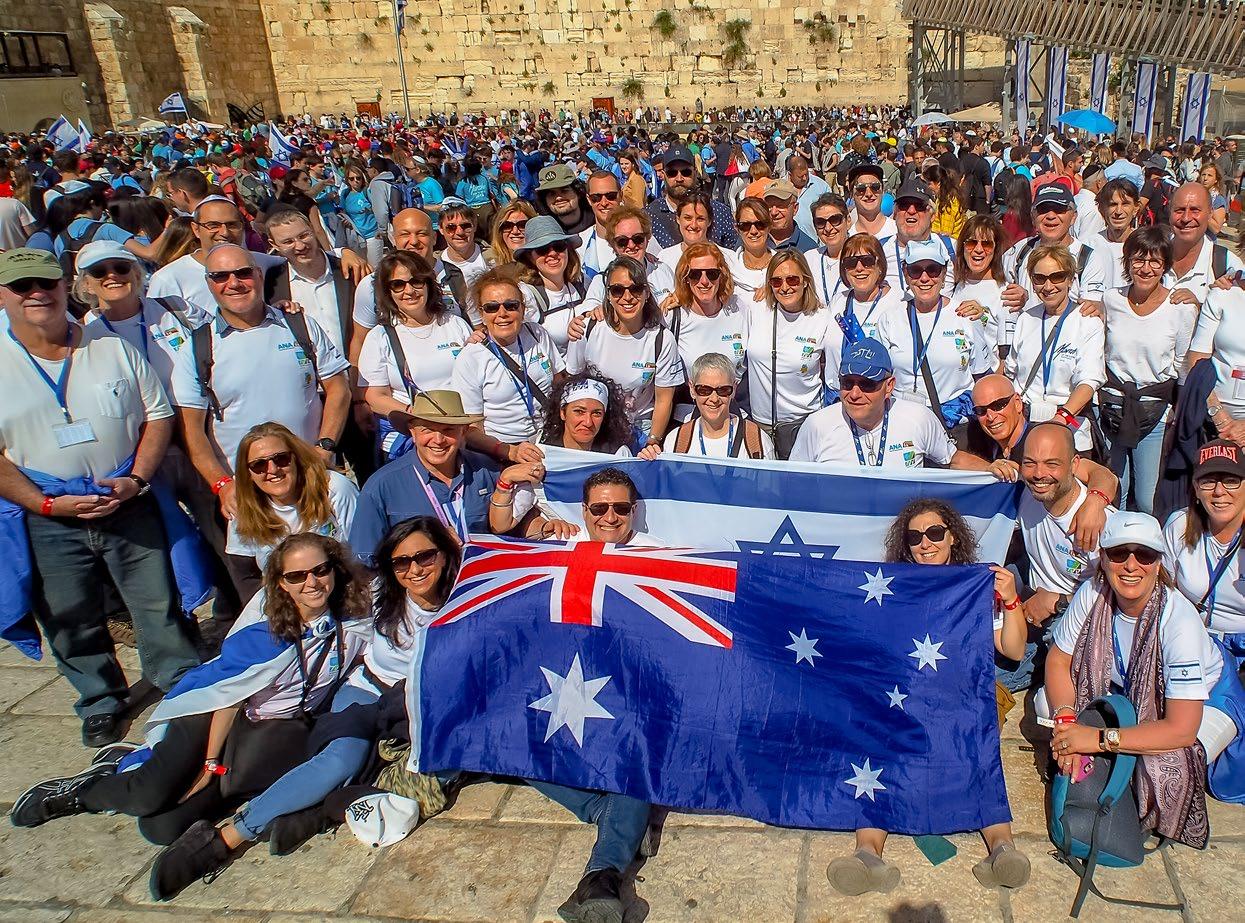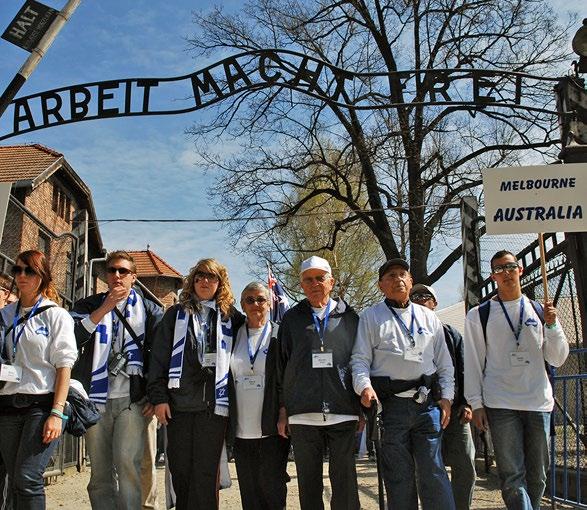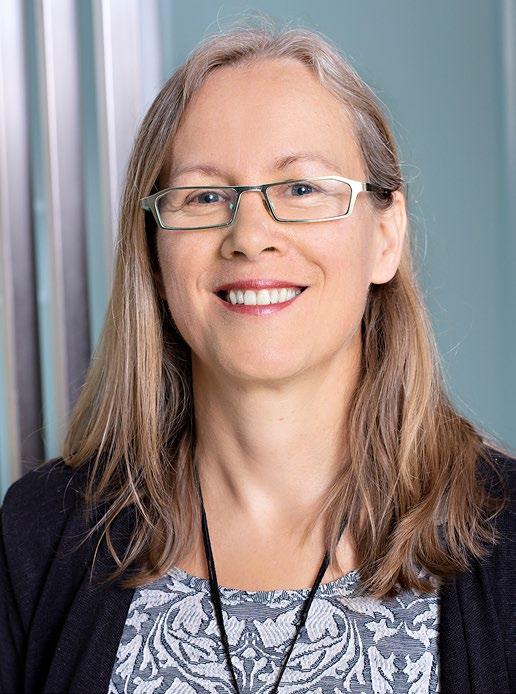
6 minute read
March of the Living Australia celebrates 20 years
Sue Hampel March of the Living Australia celebrates 20 years
Jerusalem, 2019 Photo: Yoav Lester
Advertisement
The March of the Living (MOTL) is an annual journey where thousands of Jewish teens and adults from around the world visit Poland and Israel to mark Holocaust Remembrance Day and Israel Independence Day. Its purpose is to give participants an educational journey through these important historical places and to learn from the past in order to change the future.
It is hard to believe that it has been 20 years since I first brought MOTL to Australia. As the Hebrew saying goes, ‘Kol hahatchalot kashot (all beginnings are hard).’ In 1988, Australia was invited to participate in the first international student MOTL program, but over 1,000 Holocaust survivors signed a petition against official communal journeys to Poland. Sam Lipski wrote in the Australian Jewish News, ‘For many … Poland is a painful memory … a graveyard for millions of European Jews during the Holocaust.’ Fast forward to the year 2000, when Hilton Rubin, then principal of Mount Scopus Memorial College, approached me to discuss organising a student trip to Poland – leading to the birth of MOTL in Australia. With the support of the Jewish Holocaust Centre (JHC) and the Descendants of the Shoah, led by Pauline Rockman and the late Shmuel Rosenkranz, the fears of the survivors were allayed and MOTL went from strength to strength, now recognised as one of the foremost programs for Year 11 Jewish students. I led the first Australian MOTL along with outstanding Jewish educators Marion Seftel and Sandy Hollis from Sydney and Frances Prince from Melbourne. As Jackie Cohen said in 2001, ‘This incredible experience has helped me to understand that we have a responsibility to educate people about what we have learnt.’ As teachers, we were determined to challenge our students to confront a dark period in Jewish history with understanding and empathy, and the experiential nature of the trip impacted in a way that no classroom or museum ever could. By visiting the places where dynamic Jewish communities once flourished, we hoped to convey the richness of pre-war Jewish life and make this history more accessible. By seeing first-hand the physical remnants of the Nazi machinery of destruction, our goal was to ensure that Australian students will be never be passive bystanders in the face of evil.
The role of survivors accompanying students throughout the journey is central. Listening to survivors in the classroom is one thing, but listening to their stories outside their former homes, schools and synagogues is quite another. Hearing survivors give their testimony at the camps where they suffered unspeakable horrors is a powerful means for the transference of memory. Over 30 Melbourne survivors
have participated in the program, including Eva Slonim, Rita Ross, David Prince, Judy Kolt, Abram Goldberg, Joe Szwarcberg, the late Saba Feniger and the late Tuvia Lipson. Their eyewitness accounts have given students insight into both the depths to which humanity can sink and the heights to which humanity can rise, and their presence is a reminder of the resilience of the human spirit.
Travelling to Israel is powerfully uplifting after an emotional week in Poland and words cannot describe the excitement on the flight to Tel Aviv as we leave a place of destruction and silence for a land of rebirth and vibrancy.
The Israeli component of the program enables participants to experience Israel in a way that cannot be experienced in the classroom or on traditional tours. The two indelible highlights are Yom Hazikaron, when a piercing and powerful siren reverberates as Israel remembers those who have given their lives in protecting the Jewish homeland and Yom Ha’atzmaut, a wonderful day of celebration.
Since 2001, over 1,500 students have participated in this life-changing program. In 2004 adults participated for the first time, thanks to the incredible efforts of Pauline Rockman. When I reflect on my 11 trips, so many memories come flooding back – the tears cried in the bleakness of Belzec; the unbearable sadness on Yom Hashoah in Auschwitz-Birkenau, the ultimate factory of death; the coldness of Majdanek; reciting Kaddish in so many forlorn places including Treblinka, Tykocin, Lopuchowo, Warsaw and Lodz. My strongest memories, however, are of the indomitable spirit of our remarkable survivors.
The program has a lasting impact, as a majority of students return with a greater commitment to Israel, remembering the Holocaust and strengthening their Jewish identity. So many have made important contributions to the community, such as volunteering in humanitarian pursuits and working to combat prejudice and hatred. I am so proud of the participants, many who have become agents of change in the Australian community.
Thank you to the survivors, educators, rabbis, psychologists, doctors, support staff and the madrichim who have been part of the MOTL family. It is an honour and a privilege to serve as the founder and first President of MOTL Australia and I am pleased that Cedric Geffen has continued to ensure that the program is still as relevant today as it was 20 years ago.
Sue Hampel OAM is JHC Co-President and the founder and first President of MOTL Australia and Cedric Geffen is the current President.

Auschwitz-Birkenau, 2007 Photo: Emmanuel Santos
Cedric Geffen
My March of the Living journey began when my dear friend Sandy Hollis, one of the four founding educators of MOTL Australia, first exposed me to the magic of this program. After learning more about the program, I knew that it could change lives and decided to establish MOTL New Zealand, under the wing of MOTL Australia.
The first New Zealand delegation joined the Australian program in 2006 and I have been involved ever since. My involvement over 15 years – 10 as president – has enriched me immeasurably. The privilege of sharing this unique experience with survivors, their descendants and thousands of Australian student and adult participants is something I cherish. It acts as the beacon that continues to drive my commitment to Holocaust memorialisation, education and Tikkun Olam.
Two memories stand out for me: In 2011, Abram Goldberg, accompanied by his son Charlie, his grandson Daniel, and the entire group, linked arms and proudly sang the Partisan Song outside the museum at Belzec. Then, during the 2014 student program, I recall the utter joy and pride we felt when we conducted a ‘mini’-bar mitzvah ceremony for Daniel Szwarcburg in Warsaw’s Nozyk Synagogue. Daniel, aged 83, had attended the shul with his father as a boy before the war, but had been denied a bar mitzvah when at 13 when he was forced to go into hiding.
As MOTL has grown, many changes have occurred: the student and adult delegations have been unified under one MOTL Australia banner; a Young Adult program has been established; the adult program has grown so much that in 2019 we sent our first independent all-Australian delegation rather than combining with other international adult groups; and in 2020, despite the march being cancelled, we transitioned to on-line programming, developed a new website and brand identity, enrolled the first ever-group of Victorian members of Parliament to join the march, and expanded our social media presence. None of these could have been achieved without the formidable input of Sue Hampel, the other founding members of MOTL Australia, our educators and the many volunteers who have served on the Board over the last 20 years.










